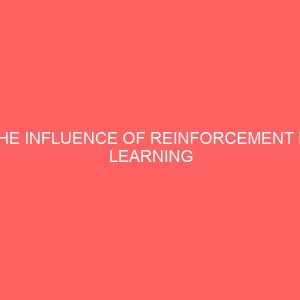Description
ABSTRACT
Nigerian Pidgin has been the popular means of communication among diverse groups in Nigeria. Its acquisition is feared to interfere with the acquisition of the English Language, which is regarded as a prestigious language meant for the educated class. Ironically, Nigerian Pidgin NIGP is used by people of different categories and classes the educated people with little or no education, young children and youths. The major concern of this research was to appraise the key features that have been instrumental to the development of a language with a low status, the Nigerian Pidgin. This research explored the social and functional domains of NIGP usage by university students, the linguistic peculiarities of NIGP as it affects its expansion, assessed the extent of cultural influence on the development of Nigerian Pidgin and analyzed the sociolinguistic profile of NIGP speakers in selected universities. This study adopted the theoretical framework proposed by Muhlhausler which describes pidgins as reflecting the human ability for rule changing creativity, to stabilize as a language. The elicitation instruments used for this research included the questionnaire, interview, and participant observation. Six universities were selected they include University of Abuja northern Nigeria; University of Lagos southern Nigeria Federal University of Technology Owerri eastern Nigeria; universities of Benin, Calabar and PortHarcourt three minority states in Nigeria. This research discovered that NIGP is a unique language that permeates all strata of the society which has evolved distinctive creative, linguistic, social and cultural features that have proved that NIGP is not only used in communication, but accommodates changes from its lexifiers. This research thus advocates for the prescription of a uniform pattern for Nigerian Pidgin usage, standardization and integration.
Table of Contents
Title Page ii
Approval Page iii
Certification iv
Acknowledgements v
Dedication vi
Table of content vii
Abstract x
List of Tables xi
List of Abbreviations xii
Chapter One Introduction
10. Background to the Study 1
1.1 Statement of the Problem 6
1.2 Purpose of the Study 8
1.3 Scope of the Study 9
1.4 Significance of the Study 12
1.5 Research Questions 13
Chapter Two Review of Relevant Scholarship
2.0 Preamble 14
2.0.1 The Linguistic Situation of Nigeria 14
2.0.2 Language, Society and Culture: Impact on Pidgin 23
2.0.3 Language Attitude, Planning and Policy 28
2.1 Conceptual Framework 37
2.1.0 Relevant Concepts in Pidgin Development 38
2.1.1 Language Contact and Multilingualism 38
2.1.2 CodeSwitching and CodeMixing 44
2.1.3 Origin and Development of Pidgin 48
2.1.4 Nigerian Pidgin: Issues and Varieties 53
2.1.4.0 Issues in Language Studies and Impacts on NIGP 56
2.1.4.1 Varieties of Nigerian Pidgin 69
2.2 Theoretical Framework 74
2.3 Empirical Studies 82
Chapter Three Research Methodology
3.0 Preamble 92
3.1 Population and Sampling Technique 92
3.2 Research Settings and Subjects of the Study 94
3.3 Research Instruments and Procedure 96
3.4 Research Limitations 98
Chapter Four Data Analysis
4.0 Preamble 99
4.1 Social and Functional Domains of Nigerian Pidgin Usage in Universities 99
4.2 The Linguistic Peculiarities of Nigerian Pidgin 103
4.2.1 Phonological Level 103
4.2.2 Syntactic Level 108
4.2.3 LexicoSemantic Level 115
4.3 Cultural Influence on the Development of Nigerian Pidgin 121
4.3.1 Politeness and Respect 121
4.3.2 Solidarity and Kinship Terms 123
4.3.3 Greeting 123
4.3.3 Idioms, Proverbs and Transfer Features 123
4.3.4 Cultural Lexical Items and their Interpretation 124
4.4 Sociolinguistic Profile of Nigerian Pidgin Users in Universities 126
Chapter Five Discussion of Results, Recommendation and Conclusion
5.1 Results 142
5.2 Recommendation 147
5.3 Conclusion 148
Works Cited 151
Appendix 1 Mother Tongue of Respondents. 166
Appendix 2 Extracts of Discussions 167
Appendix 3 Questionnaire. 172








Reviews
There are no reviews yet.